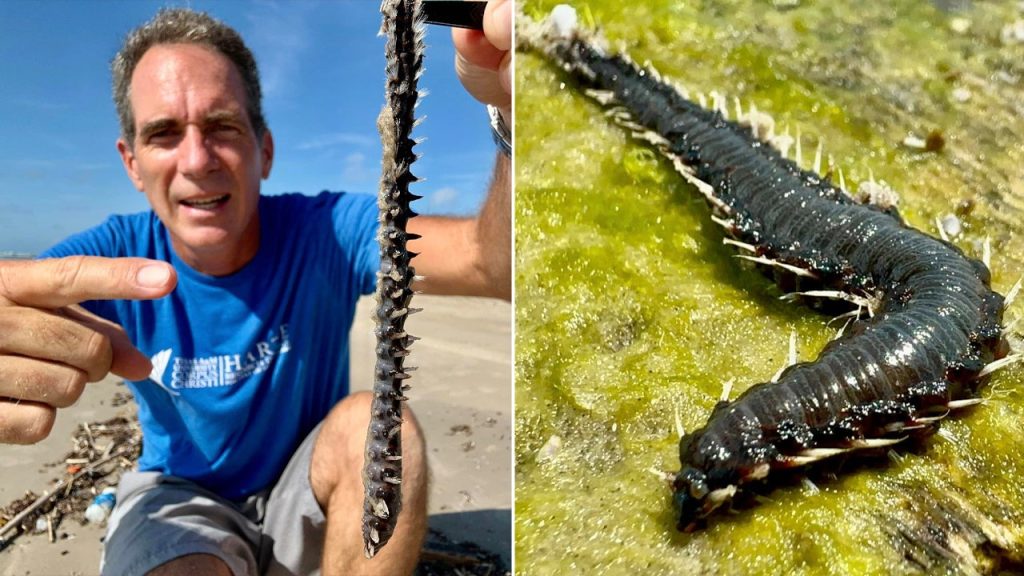A recent discovery of venomous fireworms, also known as bristle worms, on the beaches of Corpus Christi has raised concerns among beachgoers. The National Park Services (NPS) has provided information on the tiny, needle-like spikes on these creatures, each filled with venom. Despite the alarming nature of these creatures, experts have reassured the public that there is no need to be afraid of the fireworms. The Harte Research Institute for Gulf of Mexico Studies describes the fireworms as marine polychaetes that feed on gooseneck barnacles. The name fireworm comes from the intense pain caused by its venomous spikes, which can last for hours.
The fireworms found on the Texas Gulf Coast are known for their venomous spikes filled with neurotoxins that are meant to protect them from predators. The Harte Research Institute warns that the skin can remain sensitive at the sting site for weeks depending on where the fireworm stung you. If stung by a fireworm, experts recommend using adhesive tape to remove the poisonous spikes. These creatures can be found in the Atlantic Ocean, Mediterranean Sea, and the Gulf of Mexico. The fireworms are typically found feeding on corals, anemones, and small crustaceans like gooseneck barnacles. Despite their fearsome appearance and venomous spikes, fireworms are a natural part of the marine ecosystem.
The discovery of venomous fireworms on the beaches of Corpus Christi has sparked interest and concern among beachgoers. The Harte Research Institute for Gulf of Mexico Studies has been studying these creatures and providing information on their behavior and habitat. Experts have advised the public not to be afraid of fireworms, despite their venomous nature. The fireworms are a natural part of the marine ecosystem and play a role in maintaining the balance of marine life.
Facebook users have expressed shock and surprise at the existence of fireworms, with some commenting on the potential danger of accidentally stepping on one of these creatures. The Harte Research Institute has been working on advancing sustainability and conservation efforts in the Gulf of Mexico since its establishment in 2001. The discovery of fireworms is just one example of the diverse and unique marine life that can be found in the Gulf of Mexico. Despite their fearsome appearance, fireworms play an essential role in the marine ecosystem and should be respected and protected.
In addition to the discovery of fireworms on the Texas Gulf Coast, other odd and unusual marine species have been making headlines. A “doomsday fish,” known as an oarfish, was discovered in La Jolla, California, a rare species with only 20 reported sightings in the state since 1901. A man from Fort Wayne, Indiana, set a state fishing record by catching a spotted gar, a prehistoric-looking species. The Goliath birdeater, the world’s largest spider, has also been making waves with its massive size and intimidating appearance. These unusual and rare marine species highlight the diverse and fascinating marine life that can be found in oceans around the world.
Despite the recent discovery of venomous fireworms on the Texas Gulf Coast, experts have reassured the public that there is no need to fear these creatures. The Harte Research Institute for Gulf of Mexico Studies has been studying fireworms and providing information on their behavior and habitat. These marine polychaetes, or bristle worms, play a vital role in the marine ecosystem by feeding on corals, anemones, and small crustaceans. While the venomous spikes of fireworms can cause intense pain, experts recommend using adhesive tape to remove the spikes if stung. The discovery of fireworms is just one example of the diverse and unique marine life that can be found in the Gulf of Mexico.













